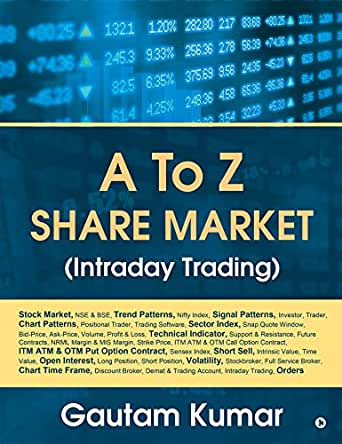Contents:

When the shipment leaves a warehouse, the buyer assumes its responsibility and needs to pay the delivery charges. Since the buyer takes ownership at the point of departure from the supplier’s shipping dock, the supplier should record a sale at that point. Also, under these terms, the buyer is responsible for the cost of shipping the product to its facility. FOB Shipping Point or ‘Free on Board Shipping Point’ or ‘FOB Origin’ is a shipping term indicating that a buyer must pay for the delivery of the goods. This means that the title of the goods passes to the buyer as soon as the shipment leaves the seller’s warehouse .

7 Great Places to Retire in the Pacific Northwest – Money Talks News
7 Great Places to Retire in the Pacific Northwest.
Posted: Thu, 23 Feb 2023 14:39:30 GMT [source]
You will see that the unit cost of the product is higher in FOB compared to EXW. This doesn’t mean that the overall costs will be higher, as this cost includes some transport costs. Sometimes custom officers at the origin port ask to inspect the cargo or ask queries about the documents. For example, if your supplier makes a mistake when declaring the goods, a customs officer will request re-submission, and your supplier will also pay for this cost.
When you access this website or use any of our mobile applications we may automatically collect information such as standard details and identifiers for statistics or marketing purposes. You can consent to processing for these purposes configuring your preferences below. If you prefer to opt out, you can alternatively choose to refuse consent. Please note that some information might still be retained by your browser as it’s required for the site to function. Designed for freelancers and small business owners, Debitoor invoicing software makes it quick and easy to issue professional invoices and manage your business finances.
These international contracts outline provisions including the time and place of delivery as well as the terms of payment agreed upon by the two parties. When the risk of loss shifts from the seller to the buyer and determining who foots the bill for freight and insurance, all depend on the nature of the contract. It requires the supplier to pay for the delivery of your goods up until the named port of shipment, but not for getting the goods aboard the ship. Ownership of a cargo is independent of Incoterms, which relate to delivery and risk. In international trade, ownership of the cargo is defined by the contract of sale and the bill of lading or waybill.
Depending on where the what does fob shipping point mean is traveling, they will usually send you some documentation, and ask you to sign an agreement stating that you wish for the forwarder to handle your shipment. FOB is the most common agreement between an international buyer and seller when shipping cargo via sea. The accounting treatment of the FOB shipping point is important since adding costs to inventory means the buyer doesn’t immediately recognize an expense. This delay in recognizing the expense and changes in the buyer’s inventory affects the net income. It is important to note that FOB does not define the ownership of the cargo, only who has the shipping cost responsibility.
What does FOB shipping point mean in accounting?
This guide cuts through the legal jargon and explains everything you need to know about this common incoterm in plain English. The term “Freight On Board” is not mentioned in any version of Incoterms, and is not defined by the Uniform Commercial Code in the USA. Further to that, it has been found in the US court system that “Freight On Board” is not a recognized industry term. Use of the term “Freight On Board” in contracts is therefore very likely to cause confusion. The phrase passing the ship’s rail is no longer in use, having been dropped from the FOB Incoterm in the 2010 revision. The International Chamber of Commerce has published the new Incoterms 2020.

As soon as the goods arrive at the transportation site, and are placed on a delivery vehicle, or at the shipping dock, the buyer is liable for any losses or damage that occur after. The buyer would then record the sale, and consider their inventory increased. Buyers can calculate the total costs of a FOB agreement by combining the FOB price from the seller and requesting a quotation from their freight forwarding company for the logistics.
Example of using FOB in an invoice
The supplier is only responsible for bringing the electronic devices to the carrier. FOB shipping point and FOB destination indicate the point at which the title of goods transfers from the seller to the buyer. The distinction is important in specifying who is liable for goods lost or damaged during shipping.
If they don’t have this, they will need to pay some fees each time they export products. The buyers and sellers have to pay different segments of the import through the method of FOB in shipping. Cost, insurance, and freight is a method of exporting goods where the seller pays expenses until the product is completely loaded on a ship. For FOB destination, the seller retains ownership of the goods and is responsible for replacing damaged or lost items until the point where the goods have reached their final destination. Free on Board is a term used to indicate when the ownership of goods transfers from buyer to seller and who is liable for goods damaged or destroyed during shipping.
Who Pays for Shipping in FOB Shipping Point?
However, if you go with EXW incoterm, the seller will provide you with a pickup location and produce goods so that you can collect, load, and transport them by yourself. Moreover, the FCA and FOB methods of transferring goods are also different. Some importers also use CIF to import a small number of products because the cost of insurance for goods is higher than the fee charged by sellers.
Incoterms are agreed-upon terms that define transactions between shippers and buyers, so importers and exporters can speak the same shipping language. While Incoterms can apply to international trade and domestic shipments, UCC is primarily used for domestic shipments. – freight forwarding companies need to know what is being shipped for two significant reasons. First, certain products require specific documentation, types of containers, include hazardous materials, or are illegal to transport.
FOB Add-on Terms
If you’re shipping items internationally, it’s essential to understand the terms and conditions of FOB. What’s even more important, you must record your shipping costs correctly. With Synder, you’ll be able to keep track of your shipping amounts and record them into your books flawlessly. The Smart Rules engine may help you to calculate VAT for your sales based on the shipping address country or region.

Freight on board shipping point indicates the transfer of product ownership to the buyer from the time the product leaves the seller’s warehouse for delivery. During both the delivery and customs inspection, it’s the buyer who takes responsibility for the shipped product. FOB shipping point transfers the title of the shipment when the goods are placed at the shipping point. This is usually the seller’s loading dock, delivery truck, or postage office.
Simply put, an incoterm is the standard contract used to define responsibility and liability for the shipment of goods. It plainly lays out how far along into the process the supplier will ensure that your goods are moved and at what point the buyer takes over the shipment process. It includes the costs of goods as well as the cost of transportation, export, and import the goods. DDP and landed costs, both have calculated sum prices, from making products to the buyer receiving the delivery.

By telling your forwarder what your cargo consists of from the beginning, they will help you stay prepared in the event any documentation or compliance might be required. The second reason is that they often handle the customs brokerage portion of the import. So the sooner they know what the products are, the faster they can begin preparing the documentation needed to import.
- For example, if you’re importing high-value items like electronics or jewelry, DDP may not be an ideal option because it can leave you with large customs duties to pay when you cross borders.
- Sale is recorded in the general ledger when the goods have arrived at the point of origin.
- The trade transit for the seller involves inland transportation which is from the warehouse to the arrival port.
- In the past, the FOB point determined when title transferred for goods.
This can lead to errors, which directly impact efficiency and https://1investing.in/ivity. In addition, it increases the risk of human error and can lead to delays due to lost or misplaced documents. These delays can cause delays in payment and customer satisfaction issues.
